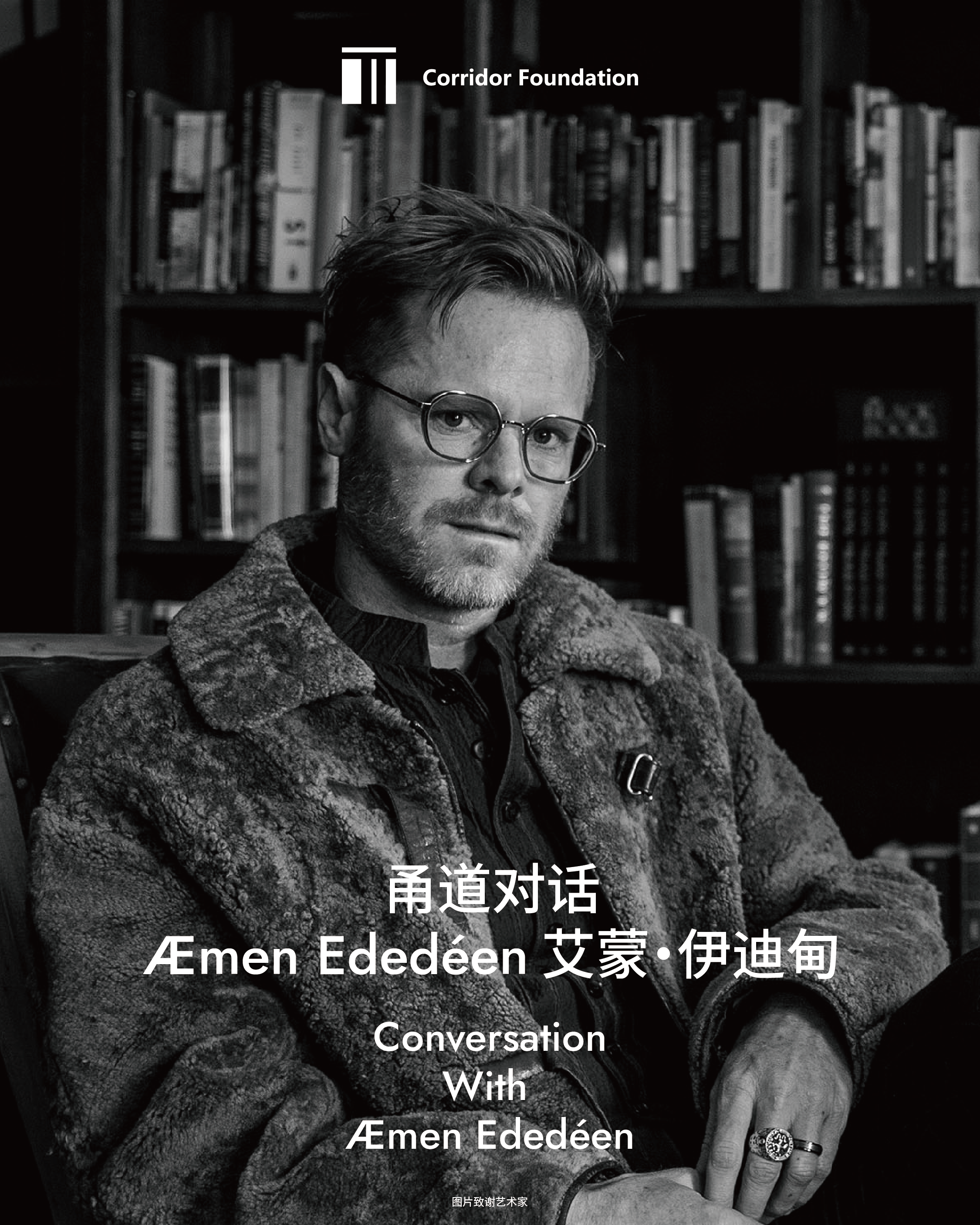Æmen Ededéen: The Work’s Pathos should Come from Its Worn-out-ness I
Æmen Ededéen (Joshua Hagler) is a renowned contemporary abstract artist from the United States. He is a 2020 Hopper Prize Finalist. Critical reviews and feature articles on his works, along with his personal poems and essays, have been extensively published in prestigious international publications and media outlets, including GQ Magazine and Italian Vogue. Currently, he resides with his wife and daughter in Placitas, which is nestled at the foot of Sandia Mountain in New Mexico. His artistic practice is profoundly shaped by independent research and extensive travel experiences, which serve as crucial pathways for integrating creative inspiration with personal life experiences. Recently, his work The Epistle of One Arriving Among the Many Departed is featured in the group exhibition Mystical Me, organized by the Corridor Foundation. Seizing this opportunity, the exhibition curator Jiin Xu (hereafter referred to as J) conducted an in-depth interview with Æmen Ededéen (hereafter referred to as E), delving into his artistic development journey and the ideological underpinnings of his creative process.
J: We’ve noticed a meaningful personal change about you recently — the change of your name from Joshua Hagler to Æmen Ededéen. Could you kindly elaborate on the reasons and circumstances that led to this decision? Additionally, we would like to know if your new name has influenced your perception of your own identity.
E: I think it’s less that the name influences my perception of myself and more that a shift in my understanding of Self has permitted me to change my name. To tell the truth, Æmen is a name I’ve kept tucked away in my back pocket for about ten years but was afraid to formalize for fear of outside judgment. When I overcame the fear, I changed my name.
Æmen Ededéen is a good name for a player of the Glass Dream Game. This is someone who can play the game and exist inside it at once.
J: You have mentioned your exploration of the guiding structures of the unconscious self and meditation. Could you elaborate on how you perceive the relationship between the id, ego, and superego, as well as their impact on your artistic creations?
E: Well, those are terms that belong to Freud, and while I think all of them express real things about human psychology, I’m not attached to them as having reality in themselves. In other words, I don’t really think in those terms, except to say that I understand ego, my ego, as a the particular position from which I experience the world. I guess I equate ego with the conscious self. I’ve tried and failed to escape the human drama—I can’t—so I think it’s okay to let the ego have a place at the table. I’m not trying to get rid of it.
That said, it’s a routine part of my life to spend time in meditation because I think the time we spend in deeper awareness, going behind and beneath ego, is important to the way in which we experience life in general, and, therefore, to the way in which we understand ourselves. This determines all kinds of things, not the least of which would be the kind of work I might want to make, even how I understand what it means to “make” art. One hopes that Self includes the world beyond egoic striving.
Note:
The Glass Dream Game is a divination game developed and practiced by Æmen Ededéen. The Game begins through a cleromantic process selecting six books by chance from Æmen's library of 900+ books. One page in each of these books is selected through the same chance process, resulting in a Hexagram. From these six pages Æmen takes notes and makes sketches, looking for connections and noting any synchronicites emerging from the Hexagram. This process constitute Trials. Using the notes and sketches from the Trials, Æmen writes a Dream, a written passage connecting the elements across a Hexagram. From the Dream comes the Vision, a painting or artwork, not about the Dream, but in some way informed by it. Through the Hexagrams, Dreams, Visions, and Trials, an extensive network of relationships begin to emerge. If a theme, object, or idea reoccurs across multiple Dreams and Visions it is cataloged as a Symbol. The Glass Dream Game is still in its early experimental stages. Its real purpose and numerous possible implications and applications are mostly unknown.
Edit by Sai, Veronica





